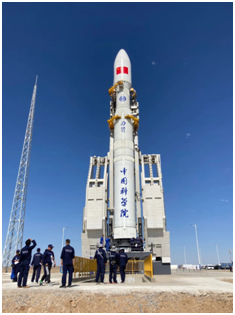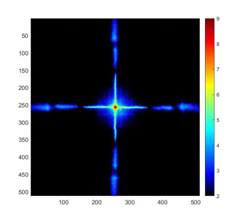
The ZK 1A, a new model of carrier rocket made its debut flight at the Jiuquan Satellite Launch Center at 12:12 am on July 27. The rocket placed six satellites connected with technological demonstrations and scientific experiments into preset orbits.
A set of "Lobster-eye" X-ray microporous optical instruments, independently developed by North Night Vision Science & Technology Research Institute Group in Kunming, have been selected as key components of appraisal facilities for the large field-of-view "Lobster-eye" X-ray telescope in a satellite named Einstein-Probe (EP). The EP satellite is tasked with a mission to discover celestial bodies that emit X-rays during fierce changes as well as quiescent black holes with transient high-energy radiation.

X-ray focus image
The "Lobster-eye" X-ray telescope is capable of achieving balanced and large field-of-view imaging in X-ray range and conducting agile, real-time and dynamic observation of celestial bodies. The optical instruments, contributed by the Institute Group, will undertake the task of verification during the early period of orbit.
Thanks to its perseverance for years, the Institute Group successfully designed its "Lobster-eye" X-ray microporous optical instruments installed with internationally advanced high-precision indicators in 2015. So far, North Night Vision Science & Technology Research Institute Group has delivered 456 pieces of appraisal facilities for the large field-of-view "Lobster-eye" X-ray telescope. These high-tech facilities will travel to space with the EP satellite, which is scheduled to be launched in 2023. It will provide the country with solid technological support in the revolutionary development of its large field-of-view celestial observation, and accelerate the pace of technological independence and self-reliance.